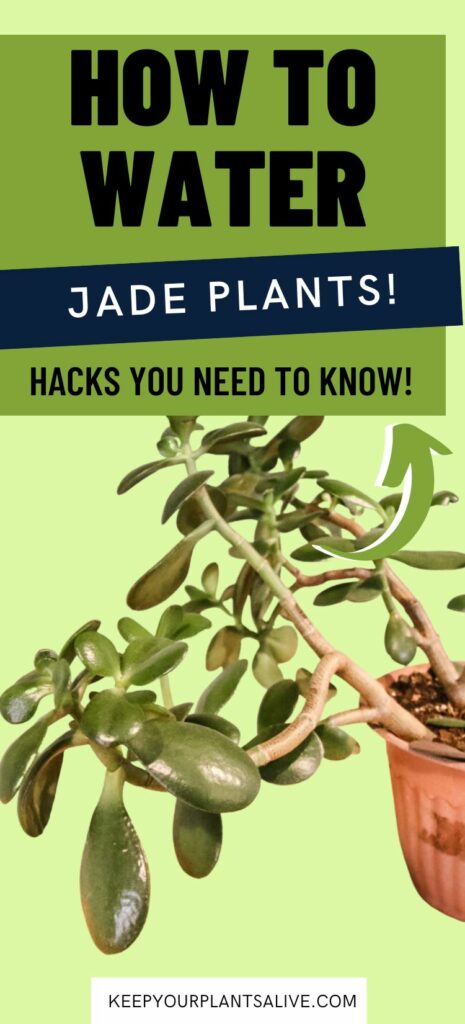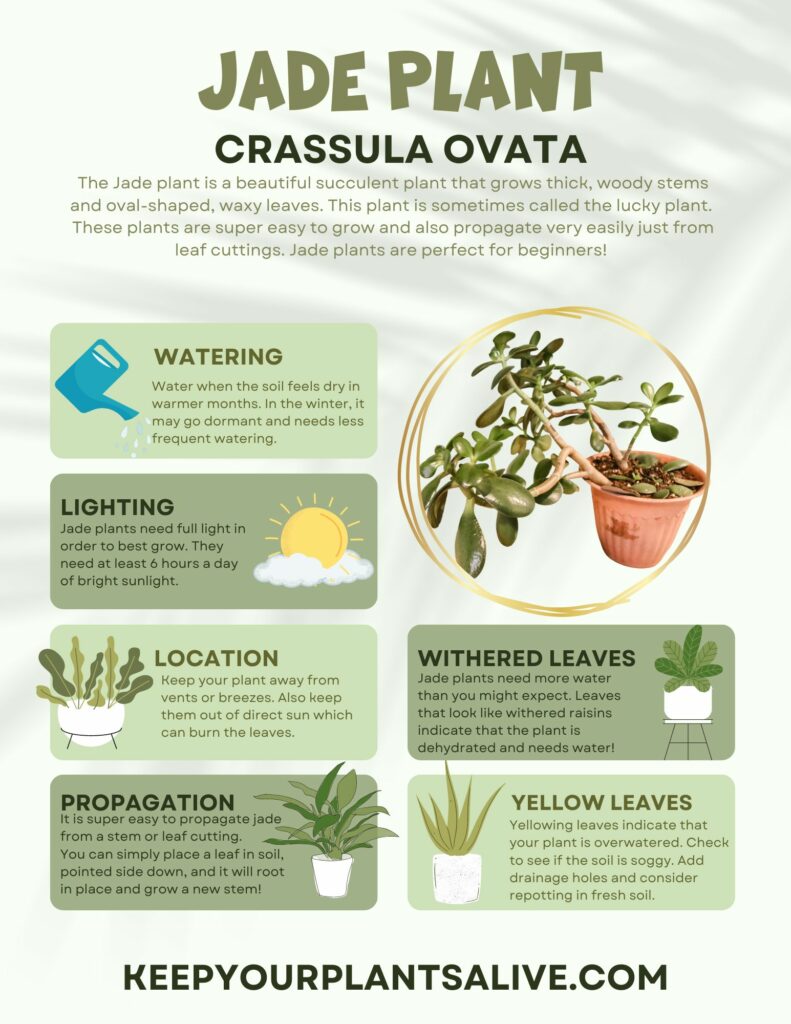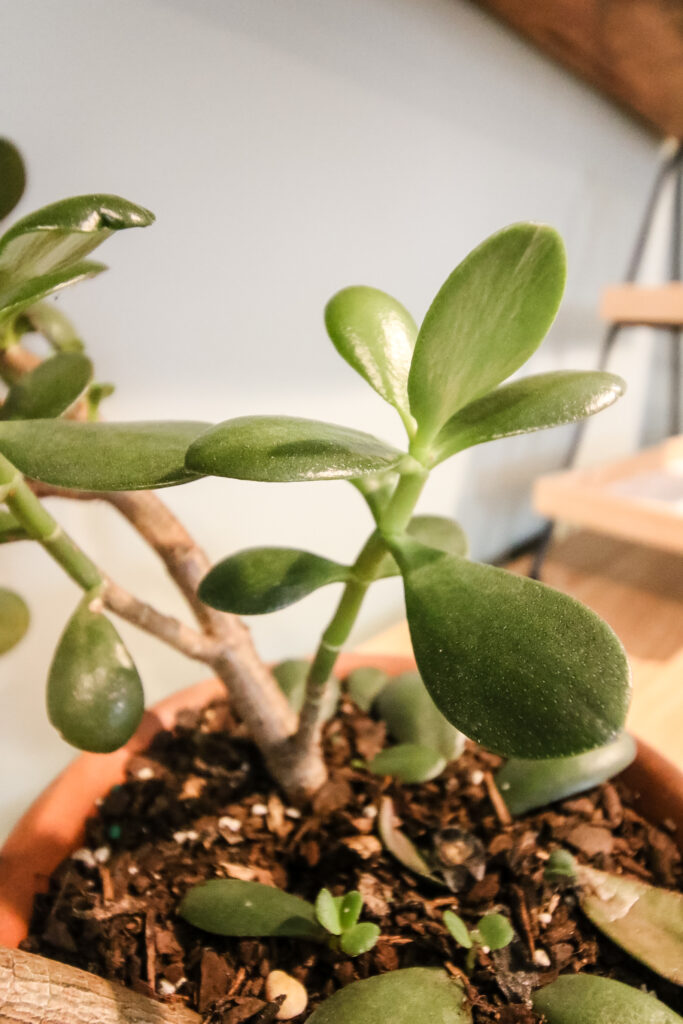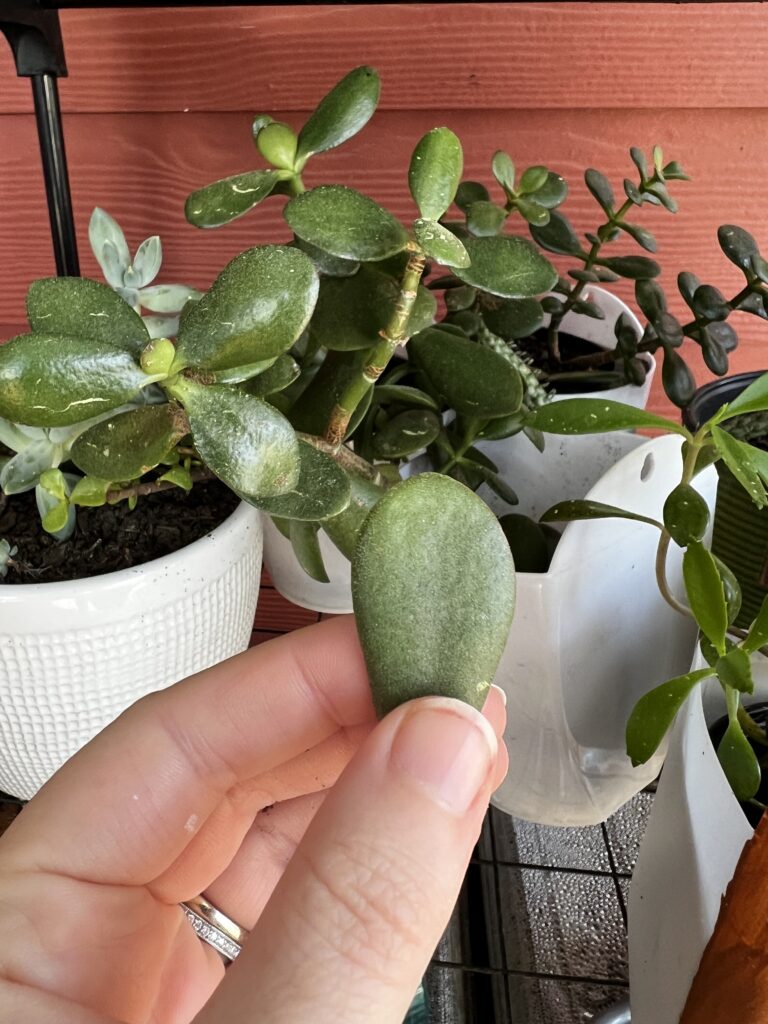Want to take the best possible care of your jade plant? Here's a complete guide on how to water jade plants including winter care, bottom watering, and humidity needs!
The Jade plant, also known as Crassula ovata, is a popular and easy-to-grow succulent native to South Africa.
It is a member of the Crassulaceae family and is a small shrub with fleshy, oval-shaped leaves ranging from light green to dark jade.
The plant also produces small, star-shaped white or pink flowers that bloom in clusters during the winter months.
These plants are known for their ability to thrive in various growing conditions, making them a favorite among novice and experienced gardeners. They are typically grown as houseplants or in outdoor gardens in mild to warm climates.
In addition to their attractive appearance, they are also thought to bring good luck and prosperity to their owners. They are commonly given as gifts during special occasions such as weddings, housewarmings, and birthdays.
Proper watering is an important aspect of caring for jade plants. That’s why we prepared this guide to help you with everything you need to know about watering jade plants.

More about Jade Plants!
- Complete Jade plant care guide
- The best pots for jade plants
- How to propagate a jade plant
- How to properly water jade plants
- Why is my jade plant turning yellow?
- Why is my jade plant dropping leaves?
Printable Jade Plant care guide
Join the (free!) KeepYourPlantsAlive+ community to access this exclusive printable plant care guide! Once you sign up, you can right click & save the JPG care guide. Or keep scrolling for more!

How often and how much to water a jade plant
The amount of water required for a jade plant will depend on various factors, such as the size of the plant and the pot it is in, the type of soil, and the environmental conditions.
As a general guideline, it is best to wait until the soil has dried out completely before watering again.
To check the moisture level, insert a finger into the soil up to the first knuckle. It is time to water the jade plant if the soil feels dry.
It is important to water deeply and allow the excess buildup to drain out of the bottom of the pot to prevent water accumulation, which can lead to root rot.
Here's our complete guide on how to drill drainage holes in ceramic pots.

How to know when my jade plant needs water?
Jade plants prefer to be slightly under-watered rather than overwatered, so it's important not to water them too frequently.
Here are some signs to look out for that may indicate your jade plant needs water:
- Soil dryness: As previously mentioned, the first thing you need to do is to check whether the soil is dry. If so, add a fair amount of water.
- Leaf drooping: If the leaves of your jade plant start to droop or become soft and flexible, this may indicate that the plant needs water.
- Leaf color: If the leaves of your jade plant start to look slightly wrinkled or appear to have a slightly duller color than usual, your plant will benefit from some moisture.
- Soil color: The soil color will also indicate of when it's time to water. Dry soil will be lighter in color, while moist soil will be darker.

Should I water a jade plant from the top or bottom?
I love bottom watering my plants - it is easy and can help avoid overwatering. But, how you water your jade plant will depend on the type of pot that you have it in!
If the jade plant is in a pot with drainage holes, watering from the top is usually the easiest and most common method.
To do so, simply pour room-temperature water evenly over the soil until it drains out of the pot's bottom. Allow the excess water to drain away completely before placing the pot back in its desired location.
If the jade plant is in a pot without drainage holes or you prefer to water it from the bottom, you can use the bottom watering method.
This involves placing the pot in a saucer filled with water, allowing the soil to absorb the water from the bottom.
After about 10-15 minutes, remove the pot from the saucer and allow any excess moisture to drain out before placing it back in its desired location.
Whether watering from the top or bottom, avoiding overwatering and allowing the soil to dry out somewhat between watering to prevent root rot is important.

How to water a jade plant in winter
You need to make some adjustments to your Jade care in the winter. During the colder months, the jade plant is in its dormant phase, meaning it requires less water than during the growing season in spring and summer.
Overwatering during this period can lead to root rot, greatly harming the plant's health.
Here are some tips on how to water a jade plant in winter:
- Check the soil moisture: Before watering, check the soil moisture level by inserting a finger into it. If the soil feels dry, it is time to add some water to your plant.
- Water sparingly: Generally, jade plants need less water during winter. In order to prevent overwatering the plant, it is best to do it carefully. Before watering again, let the soil fully dry out.
- Use room-temperature water: Use room-temperature water when watering your jade plant during the winter months. Why? Because cold water shocks your plant’s roots and can cause stress!
- Water from the bottom: If your jade plant is potted, you can water it from the bottom by placing it in a saucer. The soil will absorb it from the bottom, ensuring that the plant gets enough moisture without the risk of overwatering.
- Keep the plant in a cooler location: During the winter months, it is best to keep the jade plant in a cooler location with less direct sunlight. This will reduce the plant's need for water and prevent it from drying out too quickly.
Remember that the watering frequency will depend on various factors, so always check the soil moisture level before watering and adjust the frequency accordingly.

Can I spray water on my jade plant?
It is not necessary to spray water on your jade plant, but you can do so if you wish. Jade plants do not require high humidity and can thrive at average household levels.
Spraying water on the plant can help remove dust and debris from the leaves, further keeping the plant healthy and looking its best.
If you do decide to spray water on your jade plant, be sure to use room-temperature water.
In conclusion, jade plants are relatively easy to care for and do not require a lot of watering. It's important to check the soil's moisture level regularly and avoid overwatering to prevent root rot.
By following these tips and reading our free PDF jade care guide, you can ensure your jade plant stays healthy and beautiful for years.

Thanks for reading!


Hey there, I'm Morgan, a houseplant enthusiast from sunny Charleston, South Carolina. Growing up surrounded by my mom's lush orchids and African violets, I discovered the magic of bringing nature indoors. Thanks to the pandemic, I delved deeper into houseplants, discovering their power to uplift moods and transform spaces. I'm here to spill all my secrets, helping you pick the perfect houseplant - and make it happy. Let's keep your plants alive, together! 😊




